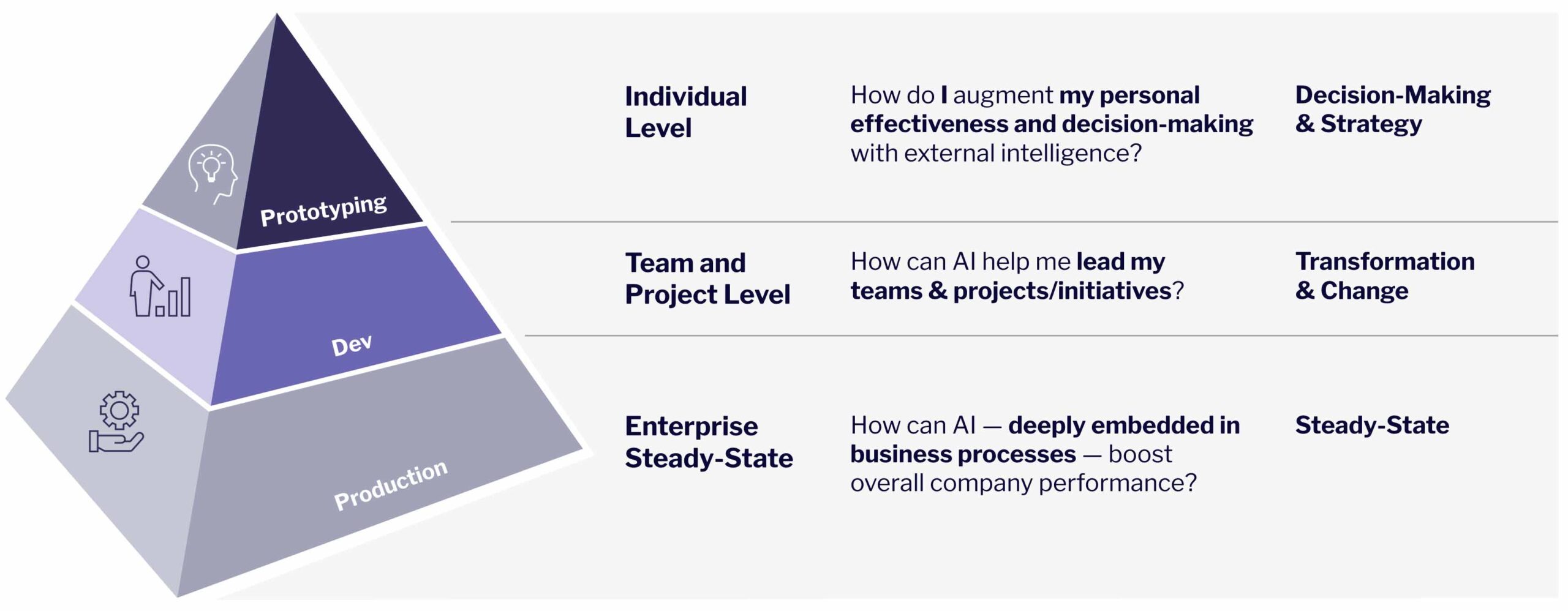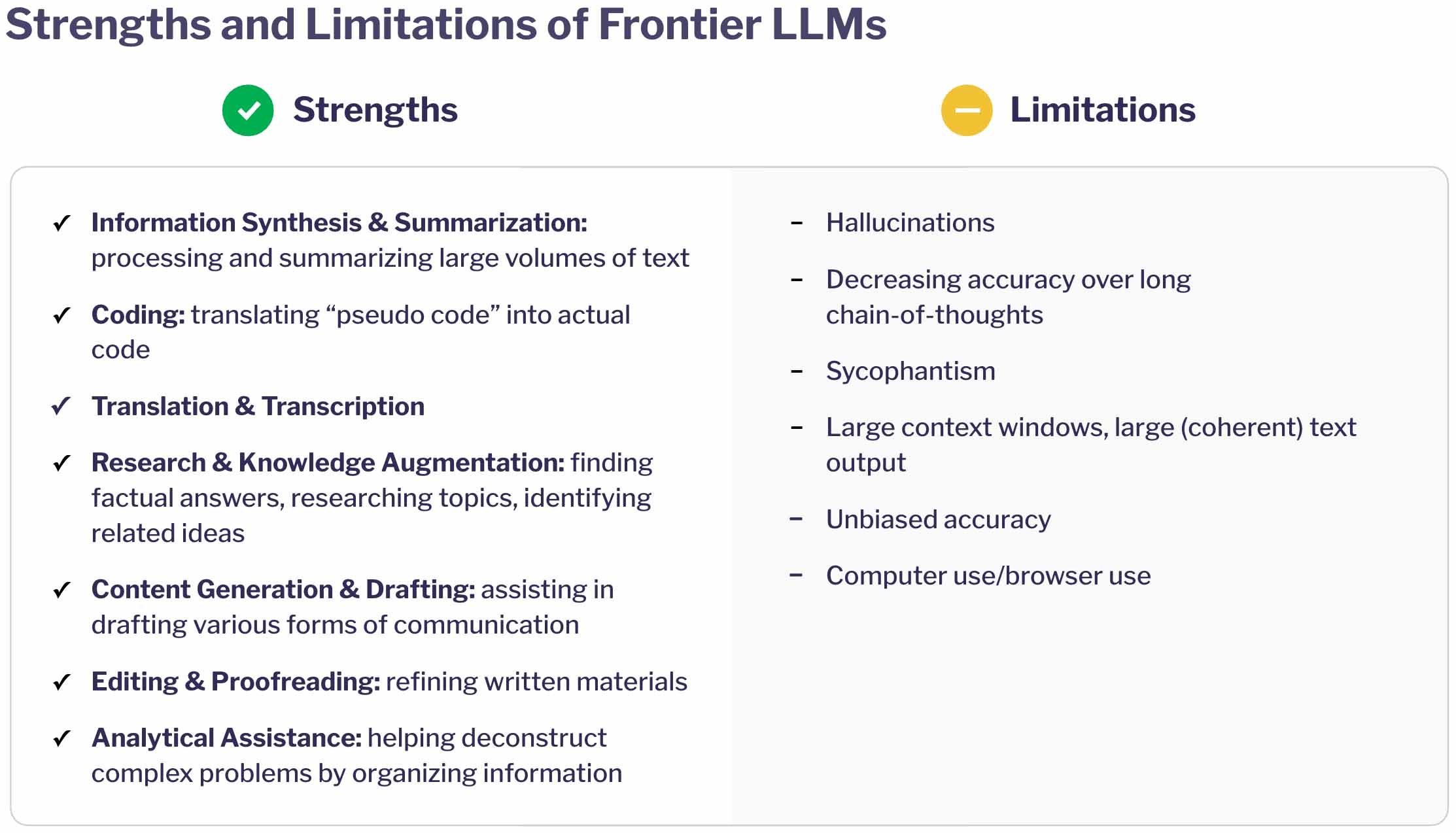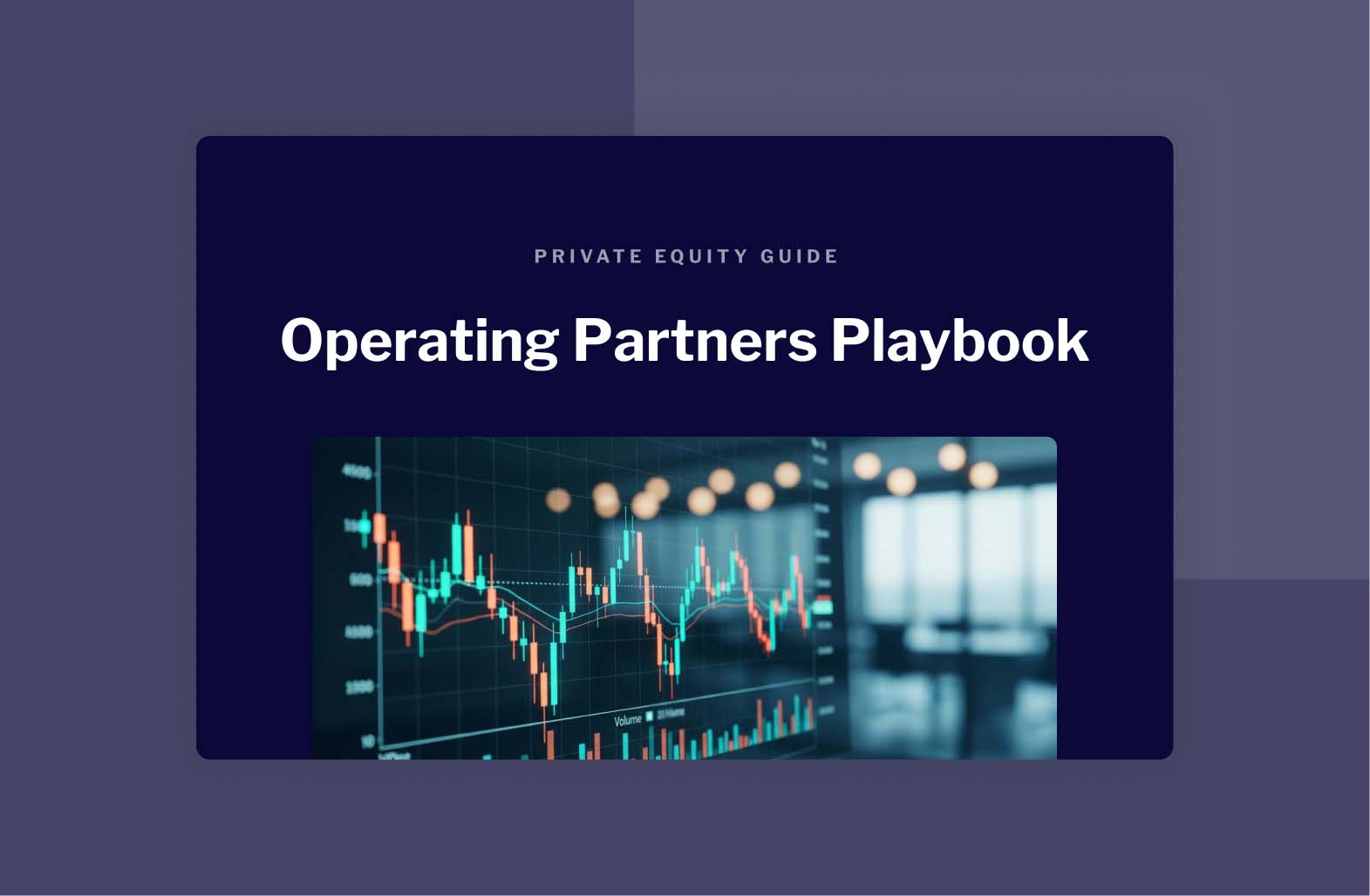Why Leaders Need to Get Hands-On with GenAI

Generative AI (genAI) is going to reshape industries at a pace few technologies have matched. From improving executive decisions to transforming service functions to accelerating product development, genAI is a force multiplier across the entire business. The companies seeing the biggest impact aren’t waiting on the sidelines; they’re led by executives who are leaning in and actively exploring what this technology can do.
I recently had dinner with senior strategy and transformation leaders in New York. At the dinner, I spoke about why I believe business executives — especially those who claim they have ‘no time to tinker’ — are precisely the ones who may benefit from developing a visceral ‘feel’ for this technology. It’s not about becoming a perfect prompt engineer or diving deep into transformer architecture. It’s about intuitively and practically understanding the strengths, weaknesses, and real-world applications of genAI.
Where to start with genAI
Most executives approach new technologies with a familiar playbook that centers around ROI calculations, pilot roll-outs, and elaborate implementation roadmaps. Artificial general intelligence is not just a technology; it will augment, and potentially substitute, entire functions. That’s why experimentation — playfully, personally, and repeatedly — is key: In my experience, those who allow themselves to tinker early with large language models (LLMs) truly ‘get’ what they are about and make better decisions down the line. Continuous, low-stakes experimentation — not multimillion-dollar rollouts — separates the companies that quietly update their operating model from those still writing AI vision statements.

Why start with yourself? Because this technology is qualitatively different. Humanity is in the process of birthing a new type of intelligence that works (and fails) in mysterious ways. Adopt an agile mindset: experiment first, formalize later. The goal isn’t a polished deliverable; it’s to develop an instinctive feel for what genAI tools do brilliantly, where they stumble, and how they might fit into your workstreams. Several hands-on sessions will teach you more than a stack of AI whitepapers or explainers ever could.
How to build an incremental approach to genAI adoption
Great executives have built a web of ‘extended intelligence’ around them — confidantes, mentors, spouses, friends from business school, consultants, and front-line sales staff. Each node has a bias profile—some know context but pull their punches, and others offer candor but lack domain depth. The craft is in calibrating whom to trust, for what, and when. Generative AI is a promising addition to your extended intelligence stack, but it’s neither fully trustworthy nor entirely objective. It’s like your most enthusiastic intern: smart, eager, and occasionally brilliant, but also overly confident and prone to mistakes. Treat it accordingly. GenAI may be great at parsing and summarizing 300 pages of regulation but terrible at sensing political landmines.
Here’s the tricky part: like human advisors, AI has its quirks. It hallucinates (which is tech-speak for confidently being wrong), it subtly flatters you (sycophantism), and it sometimes misses context. Just as you carefully weigh advice from your spouse (very supportive, but maybe too supportive?) and your most critical board member (smart, but perhaps missing the detailed context), you need to calibrate AI’s input.
To calibrate well, you need hands-on practice. You have to poke the AI yourself.

The best executive strategy for AI looks a lot like cautious experimentation. Pick small tasks where the stakes are low but the insight payoff is real, such as competitor analyses or preliminary scenario planning. Keep track of the results, compare them to what your answer would have been, and adjust your expectations accordingly.
If you don’t know where to begin, here’s a starter list of select use cases based on a 2024 survey:
Terminal / PowerShell prompts
Writing/adjusting résumé
Making sense of academic papers
Disputing a fine
Organizing a ‘brain dump’ / stream of consciousness
Explaining legalese
Prepare for sales calls or interviews
Summarizing meetings
Transcription
Practicing difficult conversations
Excel formulas
Troubleshooting tech
This incremental approach doesn’t just mitigate risk; it creates a practical culture of innovation. Instead of launching one big, expensive AI initiative, you’re gradually embedding AI into everyday decision-making, demonstrating tangible results early, and building genuine internal buy-in.
What comes next in your genAI roadmap
In the end, winning with generative AI isn’t about who spends the most. It’s about who plays with it first, experiments often, and learns continuously. Treating AI as a managerial priority rather than an IT project turns it from a hyped novelty into a real strategic advantage. The leaders who succeed will be the ones who get hands-on, develop their own instinctive understanding, and encourage their teams to follow suit.
Of course, you don’t have to figure it all out alone. Partnering with experienced AI consultants can help accelerate your learning curve, de-risk early business experiments, and identify high-impact opportunities that align with your business strategy. Beyond all else, stay curious, stay involved, and surround yourself with the right mix of talent to turn this new capability into a competitive edge.
Want to accelerate your AI transformation? Catalant can help.
Let’s TalkMeet the Author

Simon Mueller Stansbury is a former Senior Principal at The Boston Consulting Group and experienced tech startup entrepreneur who specializes in helping private equity firms, their portfolio companies, and enterprises deploy frontier AI solutions throughout their business operations. He is also the Co-Founder of The Future Society, a leading NGO focused on AI governance based in Cambridge, Massachusetts. He holds a Master of Public Administration from the Harvard Kennedy School and a Master of Business Administration from the University of Mannheim.










